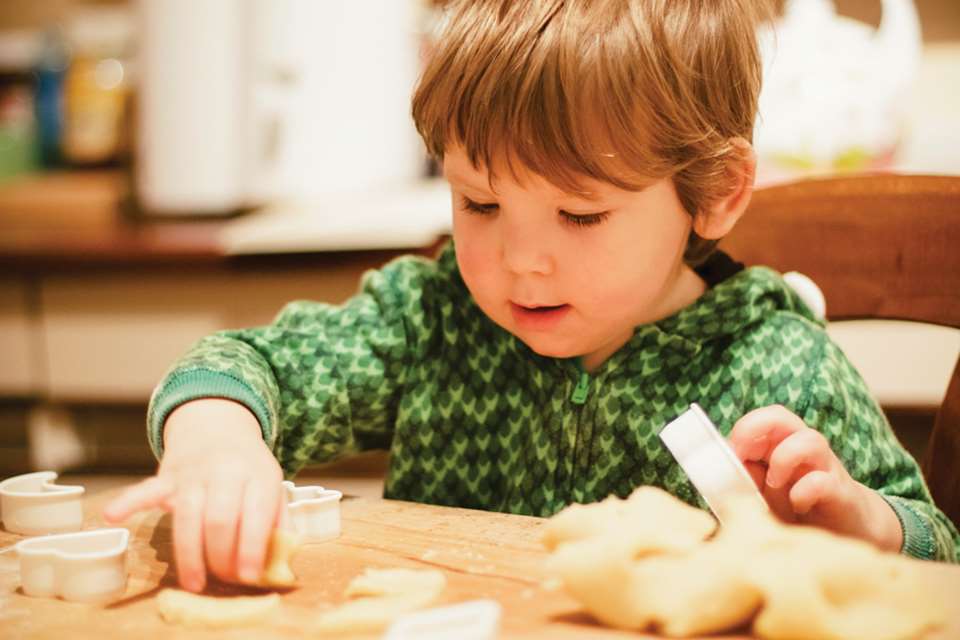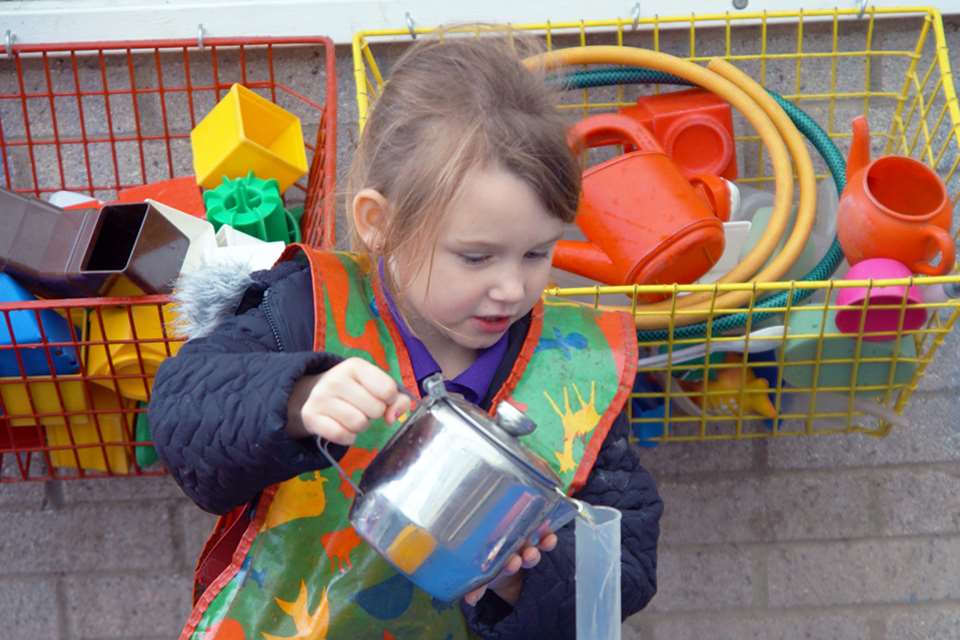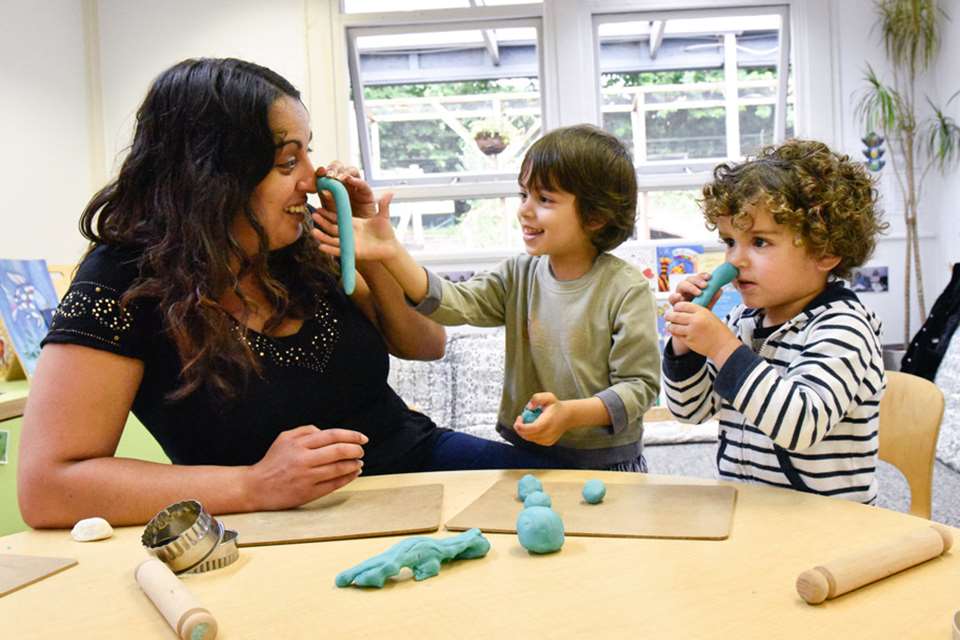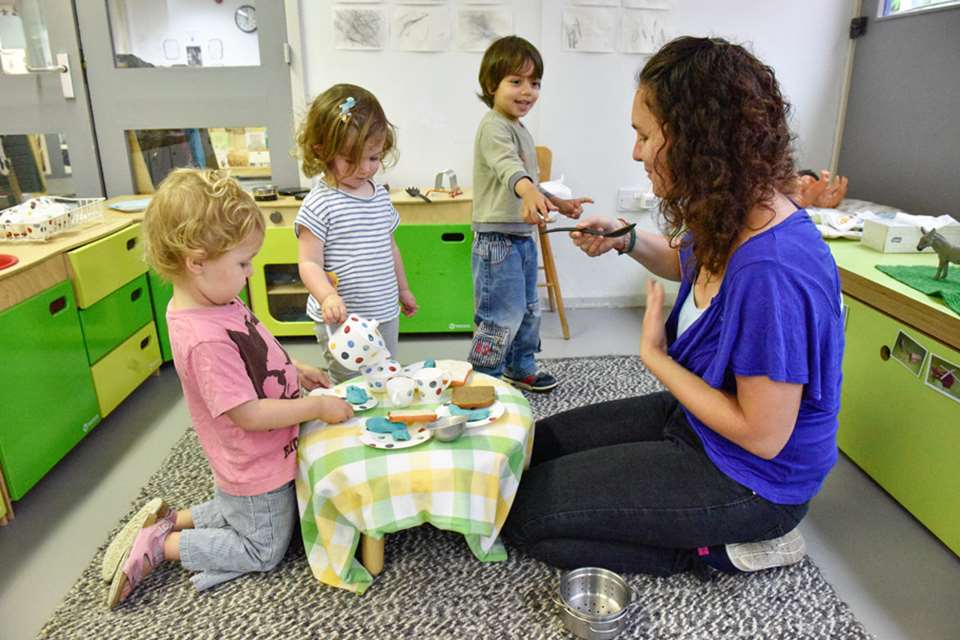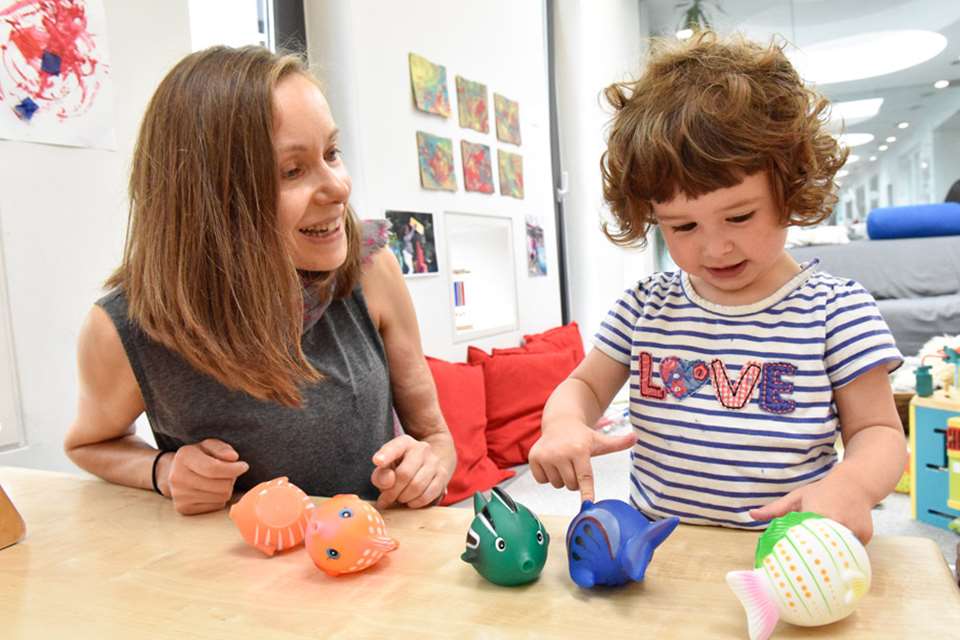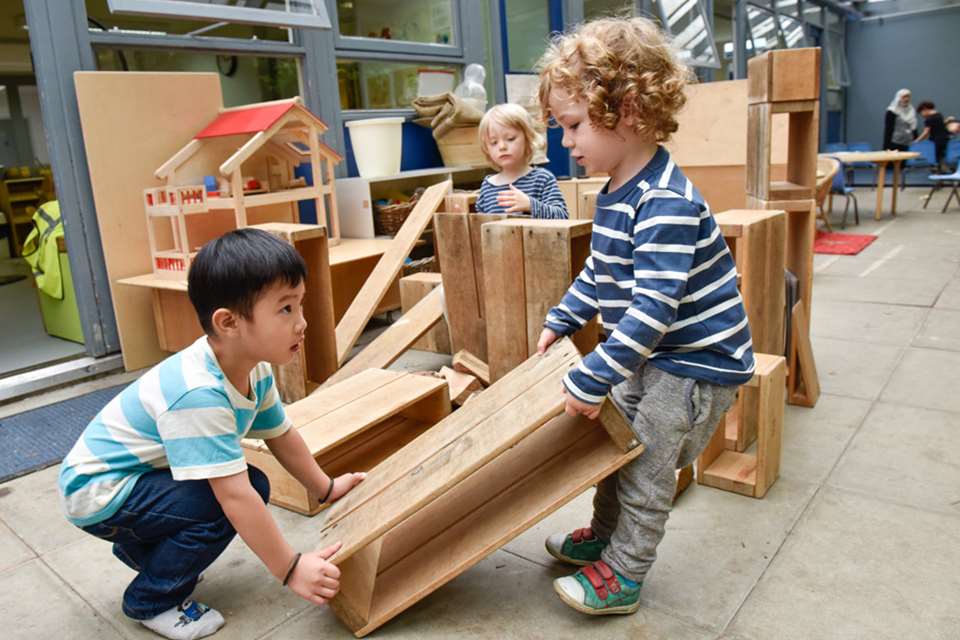Learning & Development Mathematics: Part 6 - Full marks
Ruth Thomson
Monday, June 27, 2016
In the final part of this series, Judith Dancer takes a look at supporting the maths development of four- and five-year-olds
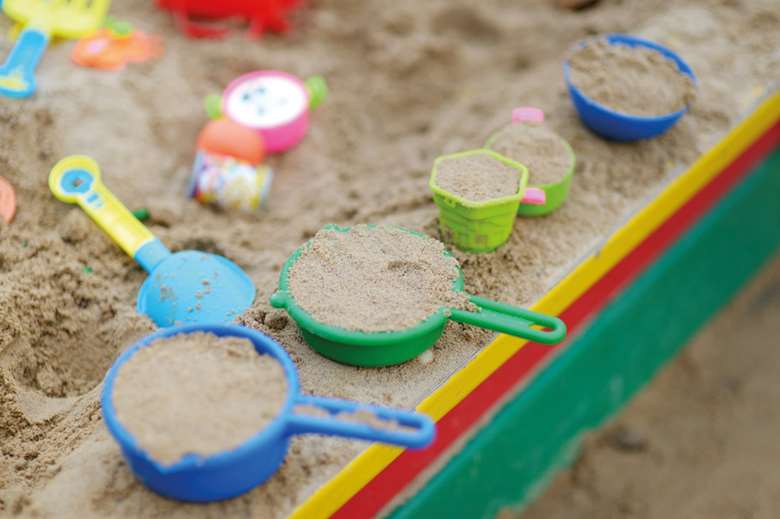
Whether in Reception or nursery, it is vital that the learning environment matches the needs of the individual four- or five-year-old and promotes their understanding of mathematical concepts and early mark-making.
CHILD DEVELOPMENT
Four- and five-year-olds need lots of uninterrupted time to explore their interests within ‘enabling environments’, indoors and out, that are appropriate to their development needs. Essential too is the support of informed practitioners with the knowledge and understanding to support children’s own learning. The National Centre for Excellence in the Teaching of Mathematics (NCETM) still offers free online training modules for practitioners. Registration is free and the training identifies:
- what children need to know and understand to become confident and competent mathematicians
- what practitioners need to know, understand and be able to do in order to make this happen.
One problem is that practitioners often limit their observations and assessments of children’s mathematical learning to adult-directed focus activities. Consequently, children’s incidental maths learning is often missed as practitioners focus on preconceived learning intentions.
The Characteristics of Effective Learning (2014) notes: ‘Sometimes we are so focused on “learning intentions” that we miss the key, significant learning that is going on all around us. We may be so busy “observing” how children are ordering numbers from zero to ten, as they peg number cards they have made onto a washing line as part of an adult-planned experience, that we fail to observe how they are approaching the process. So we may miss:
‘Flavia: piling the number cards up, then collecting another set from the maths learning zone and matching the numerals – putting a “2” with a “2” and a “3” with a “3”. Then shuffling all the cards and dealing them out to friends.
‘Serge: sorting the cards into piles of “even” and “odd” numbers – counting in twos out loud. Walking away, still chanting “Two, four, six, eight, who do we appreciate?”
‘Charlotte: singing “Ten in a bed” as she fixes the cards to the line, and calling to Charlene ‘come and play ten in a bed with me, bring babies”. Spending over 20 minutes pegging up the cards, laying them in a row and matching one toy to each, singing and laughing.
‘Milo: refusing to join in with the activity when invited by the practitioner, but later returning when the adults and group of children leave. Looking at the cards and fixing the “4” card onto the line – between the “7” and “8” – saying “Four, I four”.
‘…So, in narrowing on the planned learning intentions, a practitioner could miss significant learning. In reality, we need to keep our eyes and ears open, tune in to children and identify the maths in their learning.’
MARK-MAKING
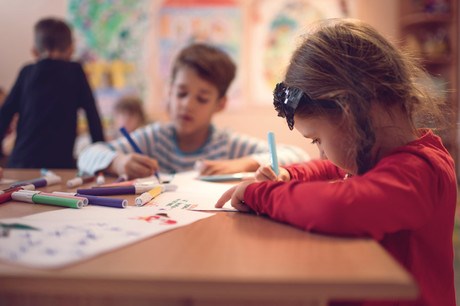
Many parents, and some practitioners, view written numerals as the benchmark of a child’s mathematical learning. However, although important, these are simply symbols and children need opportunities to explore mathematical mark-making similar to how they explore early writing and drawing if they are to develop their mathematical understanding effectively.
A child’s inability to write a recognisable numeral, due to limited fine motor skills, does not mean they don’t understand that a numeral ‘4’ indicates a quantity, and so is not an accurate reflection of their mathematical thinking and understanding.
Children may discover they can use marks to help them make sense of their world, to solve problems or clarify their thinking. Children’s fascination with numbers, especially large numbers or those that are particularly meaningful to them (their age, or familiar bus number) often form the basis of early mark-making, alongside early representations of shape, space and measures.
The adult role
Mark Making Matters (2008) explores children’s early mathematical mark-making, linked to all areas of learning and development, and identifies that effective practice includes practitioners who:
- ‘value and celebrate the mark making, mathematical graphics, writing and drawing efforts of all children so that they have a sense of achievement and their self-esteem is promoted
- ‘are fascinated by children’s thinking and committed to supporting them on their communicative journeys
- ‘provide opportunities for children to see adults writing and encourage children to experiment with writing for themselves through making marks, personal writing symbols and conventional scripts
- ‘value children’s own graphic and practical explorations…
- ‘ensure children feel secure enough to “have a go”, learn new things and be adventurous
- ‘ensure children have the opportunity to use mark making, mathematical graphics, drawing and writing to explore and develop their own interests
- ‘involve themselves in children’s mark making, mathematical graphics, drawing and writing experiences by both modelling the process and recording children’s thoughts
- ‘use the indoor and outdoor environments as resources to support children’s mark making, mathematical graphics, drawing and writing.’
Activities and experiences
You can support children’s developing mathematical mark-making by:
- drawing children’s attention to numerals in the environment – go on a ‘number hunt’ and identify bus numbers, price signs in local shops, clocks, timetables, house and shop numbers and advertisements. Try to find hand-written numerals as well as computer-generated text
- developing ‘mark-making tool kits’ in portable caddies that can be moved around the indoor and outdoor environments. Choose themes for the kits – for example, a measuring kit could include cloth, paper and plastic tape measures, rulers, Post-itNotes, lined and squared paper, pens, pencils and clipboards. A shopping-themed caddy could include receipts, real shopping lists, recipes, blank recipe and list pro formas, fancy pens, blank price labels, paper carrier bags and coins
- creating a clearly marked large-scale mark-making area outside, perhaps labelled ‘Our Mark Making Area’, where children can make marks on walls and paving slabs/Tarmac. Provide huge playground chalks and buckets of water with builders’ brushes
- including displays of children’s early mark-making as part of the environment. Include photos of children making marks and their comments about their efforts in speech bubbles, alongside results
- planning experiences that encourage scoring – for example, beanbags, balls or quoits in buckets, balls in basket-ball hoops or football goals, beanbags on large targets, skittles or tin-can alley. Provide clipboards and markers, flip-charts or chalk boards to record scores
- supporting children’s role play – build on their interests and experiences andprovide real-life writing materials such as address books, appointment cards, order pads, diaries, note books, envelopes, post cards and greetings cards
- making the most of everyday real-life routines to support mathematical thinking andmark-making – for example, lunch time, drinks, snacks, computer or iPad use, feeding class pets or cooking.
Resources
To support mark-making, provide:
Paper
unlined paper in assorted sizes, shapes, colours, textures and types
card and cardboard in assorted colours, textures and thicknesses
graph and music paper
pads, notebooks, memos, envelopes (used and unused), stamps (used, real)
sticky notes and labels
address books, diaries, calenders, order forms, registers, spiral-bound notebooks.
Tools
writing tools of different thicknesses – multicoloured pens, stubby and fibre markers, crayons, writing pencils, coloured pencils, felt-tip pens, gel pens, Biros and ‘special’ markers
stampers and ink pads
staplers and hole punchers
rulers and scissors
clay tools and sticks
a range of paints including watercolours, inks and dyes, block, powder, ready-mixed and poster paint – and palettes
a range of brushes– big, small, fat, thin, cosmetic, decorators’, square-tipped or pointed, and painting implements including rollers, sponges, stamps, wheels
a range of fixing materials – sticky tape, glue, glue sticks, staplers, paper clips, treasury tags, masking tape, string, wool
examples of environmental print – notes, maps, timetables, adverts, leaflets, junk mail, menus
ready-made books – zigzag, stapled and stapleless
message and display boards and communication pockets (displayed at child height), clipboards, whiteboards and chalk boards – a range of sizes, fixed and portable
number lines and height charts – standard and non-standard measures.
Additional outdoor resources
buckets of water and a range of tools, including paint brushes, rollers, artists’ brushes, sponges, brooms and dish mops
chunky playground chalks
chalk boards, whiteboards and assorted chalks, paints and pens
large rolls of wallpaper or lining paper and flip-chart paper
clipboards, with writing tools attached
portable writing toolkits – filled with resources such as sticky notes, masking tape, pens and pencils, selection of paper and envelopes
mark-making trolley with a variety of equipment.
SUPPORTING ‘NUMBERS’ AND ‘SHAPE, SPACE AND MEASURES’
To support children’s understanding of the key mathematical concepts within the EYFS, practitioners need to provide them with collections of resources to investigate, explore, discuss, sort, count and problem-solve.
Some of these can be ready-made collections from educational suppliers, but others should be interesting everyday objects that reflect children’s interests. Many resources can be stored in a central workshop area that children can access easily, but others may be part of other areas of provision:
Numbers
The ‘Numbers’ goal within the EYFS covers: numbers in order, counting, recognising numerals, adding and subtracting. To support children’s understanding of these concepts, provide:
number lines, tracks and squares
matching games, such as lotto, dominoes and pairs
number rhymes and supporting props, such as five speckled frogs and five little ducks
number games, such asSnakes and Ladders, Ludo and other board games
number books and story books with maths themes
natural resources – pebbles, shells, twigs, conkers
collectables such as buttons, keys, keyrings, badges, fridge magnets and cards
‘treasure’, such as beads, jewels, watches, brooches and ‘gold’ nuggets
number games for tablets
containers that support counting, such as baskets, boxes, bun trays with 12 sections, egg boxes andbiscuit and chocolate trays.
Shape, Space and Measures
 This goal covers: 2D and 3D shapes; position direction and movement; pattern and symmetry; and length, weight, capacity and time. To support children’s understanding of these concepts, provide:
This goal covers: 2D and 3D shapes; position direction and movement; pattern and symmetry; and length, weight, capacity and time. To support children’s understanding of these concepts, provide:
bags, boxes and trays to collect things in
spheres, cylinders, solid and hollow, including balls
cuboids, solid and hollow, including empty boxes
height charts, rulers, metre rules, fabric and paper tape measures
large and small solid and hollow construction equipment, including bricks
containers to fill and empty – cooking utensils, jugs, funnels, tubing
balances, bathroom and kitchen scales
purses, wallets, coins and money boxes
materials to move on a large scale – mud, sand, gravel, pebbles, logs
things to go under, over and around – den-making equipment, climbing equipment, camouflage netting, parachutes.
KEY POINTS TO REMEMBER
When supporting the maths development of all young children, remember:
Early experiences are crucial for future development and life. We need to ensure we are interacting appropriately with babies and children – talking about what we are doing and why, using mathematical vocabulary for them to hear, but not expecting them to use the words themselves until they are ready.
Early experiences need to be pleasurable, enjoyable and positive for all children. They need time and space and enthusiastic adults to share practical, hands-on early mathematical experiences with them – clapping, making noises, moving around, responding to rhythm, rhymes and songs, building things up and knocking them down, hiding things and finding them, exploring indoors and outdoors and looking at things and talking about them together. These high-quality experiences will provide the foundations for later maths experiences.
We need to remember that, ‘All areas of learning and development are important and inter-connected’ (EYFS Statutory Framework, paragraph 1.4). We need to remember not to ‘teach’ maths in isolation or by rote, or to think that ‘maths’ means sitting down, or being quiet.
Finally, we need to remember that children need time, space and open-ended resources to support their development – but, more importantly, it is us, as practitioners, who can make the difference in developing capable, confident young mathematicians.
MATHS IN OUR DAILY LIVES
Although we may not see ourselves as mathematicians, we are interacting with numbers, shape, space and measures all the time in our everyday lives. Think about how you use calculating skills every day:
Adding up the total number of children indoors and outdoors.
Working out the cost of meals for four from the local take-away menu.
Calculating how many fish cakes are needed so that eight children get two each.
Determining an acceptable tip as 10 per cent of the total restaurant bill.
Deciding thebetter holiday deal – a reduction of £100 on an original price of £499 or two holidays for £750.
Working out if there are enough slices of bread to make sandwiches for the whole family.
Roughly estimating the number of toilet rolls needed for three months.
Adding up the contents of your wallet or purse.
We all use calculation, every day. But sometimes we don’t realise how much maths we understand and use.
MORE INFORMATION
Our maths series by Carole Skinner and Sheila Ebbutt, www.nurseryworld.co.uk/mathematics-in-eyfs
Carruthers E and Worthington M (2007) Children’s Mathematics: Making Marks, Making Meaning. Sage Publications
Dancer J (2015) Mathematics in the Early Years. PACEY
Dancer J and Skinner C (2014)The Little Book of Maths Problem-Solving. Featherstone
DCSF (2008)Mark Making Matters – Young children making meaning in all areas of learning and development. DCSF
Moylett H (2014)The Characteristics of Effective Learning: Helping young children become learners for life. Oxford University Press
Skinner C and Stevens J (2013) Foundations of Mathematics: An active approach to number, shape and measures in the early years. Featherstone


